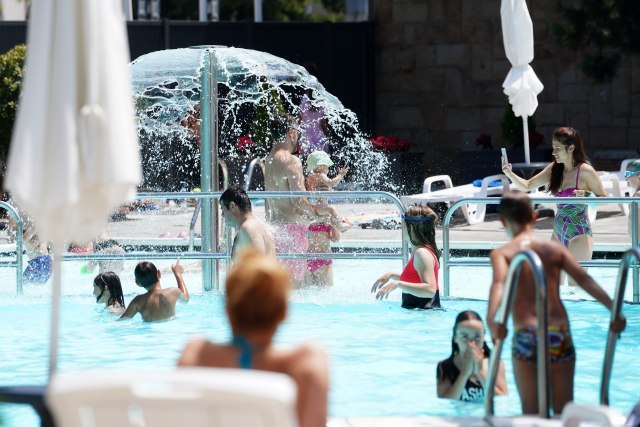Hide out in a shade: Serbia is "melting" at 40 degrees Celsius
We are at the beginning of a very warm period that will mark the entire second decade of July, when temperatures in Serbia will reach 40 degrees Celsius.
Tuesday, 11.07.2023.
12:27

Hide out in a shade: Serbia is "melting" at 40 degrees Celsius
This was announced today by meteorologist Slobodan Sovilj from the Republic Hydrometeorological Institute.In a statement for Tanjug, Sovilj warned that on days when temperatures exceed 35 degrees, the UV radiation index will be very high and that one should not be exposed to the sun's rays in the period from 10 a.m. to 4 p.m.
Sovilj says that, due to the influx of very warm air from the north of Africa, the maximum temperature will exceed 35 degrees, and on Thursday in the south and east of our country, as well as in the region of Pomerania, it will reach 40 degrees on the Celsius scale.
"Today, the maximum temperature will be 32-36 degrees, mostly sunny and warm weather, and the local appearance of short-term showers with thunder will be possible on Wednesday and Thursday, primarily in the north of Serbia due to the movement of frontal systems from Central Europe across the Pannonian Plain in the Carpathian region," Sovilj said.
He adds that on Friday and Saturday we will have a smaller drop in temperature by five to eight degrees.
"The drop in temperature will be most pronounced in the north of Serbia, so the maximum temperatures there will drop to 30, 31 degrees, while in the south it will remain at 35 degrees.
However, on Sunday, Monday and Tuesday next week, it will be hot again and the temperature will be 35-40 degrees in all parts of our country," says Sovilj.
He emphasizes that such high temperatures are not unusual and are typical. As he pointed out, every year we have one penetration of warm air from the north of Africa, or the so-called tropical continental air masses originating from the north of Africa, so that on those days the temperatures exceed 35, and sometimes reach 40 degrees.
"What is different compared to the fifties or sixties of the last century is that these penetrations are more frequent and there are significantly more of them compared to the pre-industrial period. Precisely because of this, we can say that the global temperature on Earth is rising, so the summers are also warmer on average 2.6 degrees compared to the 1950s and 1960s," concludes Sovilj.
He explains that there are criteria based on which warnings and dangerous phenomena are graded. "If we expect the maximum temperature to reach and exceed 32 degrees, a yellow weather alarm is issued, which means potentially dangerous weather. If the maximum temperature is between 35 and 38 degrees, an orange weather alarm is issued, which means dangerous weather, and if the maximum temperatures are over 38 degrees, the highest possible level of warning is issued, which is a red meteo-alarm," says the meteorologist.
He points out that the UV radiation index is very high on days when temperatures are over 35 degrees.
"Depending on the region of the country, the UV index is nine or 10, which belongs to the domain of a very dangerous phenomenon. This means that in the hottest part of the day, between 10 a.m. and 4 p.m., one should not be exposed to the sun's radiation, which is then most pronounced and most harmful to people. In in any case, you should cool down, take in sufficient amounts of liquid and stay away from direct sunlight," says Sovilj.





















Komentari 0